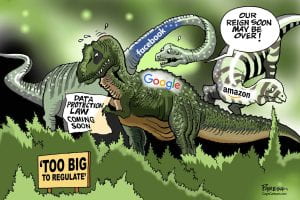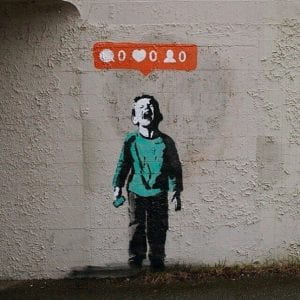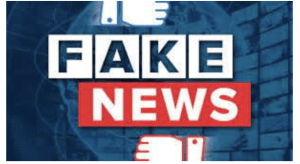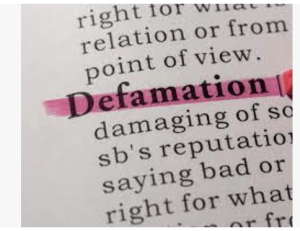In today’s digital world, where much of public discourse takes place online, the intersection between social media and immigration law has become increasingly critical. From viral debates over “migrant bashing” posts to visa revocations tied to online activism, social media now serves both as a platform for immigrant voices and as a frontier for government surveillance.
Social Media Monitoring & Immigration
Recent policy developments confirm that U.S. immigration authorities are not only observing social media activity but actively using it to inform decisions.
On April 9th 2025, U.S. Citizenship and Immigration Services (USCIS) announced it will begin considering antisemitic activity on social media platforms when evaluating immigration benefit applications. This policy immediately affected green card applicants, international students, and others seeking immigration benefits.
“ USCIS will consider social media content that indicates an alien endorsing, espousing, promoting, or supporting antisemitic terrorism, antisemitic terrorist organizations, or other antisemitic activity as a negative factor in any USCIS discretionary analysis when adjudicating immigration benefit requests.”
This marks a significant shift from traditional factors like criminal history or fraud to now assessing online speech and ideology. It reflects a growing willingness to treat moral or political expression, which was once considered private and protected, as a legitimate basis for immigration decisions.
These “discretionary analyses” primarily affect benefit applications such as adjustment of status, asylum, and visa renewals where officers have broad authority to evaluate an applicant’s moral character and other subjective factors.
ICE and Algorithmic Surveillance
Meanwhile, U.S. Immigration and Customs Enforcement (ICE) continues to expand its social media surveillance capabilities. ICE contracts with private technology companies to build AI driven systems that scrape and analyze public posts, images, and online networks across multiple languages. These systems search for “threat indicators” or potential immigration violations, flagging accounts through pattern recognition and linguistic analysis.

ICE’s Open Source Intelligence program relies on vendors such as Palantir and ShadowDragon to automate the collection and analysis of social media data for enforcement leads. Because these algorithms are secretive and often shielded from public records laws like the Freedom of Information Act (FOIA), immigrants often have no way to learn what online data was used against them or to challenge any mistakes or errors.
Observers describe this trend as part of a broader “tech powered enforcement” model, in which digital footprints shape immigration outcomes. In effect, a “digital border” has emerged. One that exists not at airports or checkpoints but within the virtual spaces people inhabit every day.
Speech and Expanding Risk
The implications are profound. A noncitizens tweets, Facebook posts, or even tagged photos can be scrutinized and used as evidence in visa adjudications or deportation proceedings.
This pervasive monitoring encourages self censorship. Immigrants and lawful permanent residents may delete posts, avoid political discussion, or disengage from activism online out of fear that a misunderstood comment could threaten their status. What once felt like ordinary self expression now carries real legal risk.

As the Brennan Center for Justice warns, vague or discretionary standards create chilling effects on speech by making it impossible to predict how officials will interpret online expression.
“the April 9 notice is likely to quell speech, discouraging immigrants and non-immigrants who are lawfully seeking a variety of immigration benefits…..from taking part in a wide range of constitutionally protected activity for fear of retaliation. And its smorgasbord of vague terms, many with no legally recognized meaning, enables USCIS officers to exercise nearly unchecked discretion in determining when to reject an otherwise unobjectionable application for a benefit……”
The First Amendment and Ideological Vetting
This new surveillance landscape raises pressing First Amendment concerns. Although noncitizens do not enjoy the full range of constitutional protections, courts have long held that the government may not condition immigration benefits on ideological conformity. Social media vetting, however, blurs that line. Turning online expression into a proxy for moral or political loyalty tests.
Courts have long struggled to balance the executive’s plenary power over immigration with First Amendment concerns raised by ideological exclusions. In Kleindienst v. Mandel (1972) the Supreme Court upheld the government’s exclusion of a Belgian Marxist scholar, deferring to the executive’s authority over immigration even when the denial indirectly burdened U.S. citizens right to receive information and ideas. Decades later, in American Academy of Religion v. Napolitano (2009), the Second Circuit reaffirmed that while the executive retains broad power, it cannot rely on secret or arbitrary rationales for ideological exclusions. Together, these cases highlight the unresolved tension between immigration control and free speech protections.
Case Study: Mahmoud Khalil
The collision of social media, political activism, and immigration enforcement is sharply illustrated in the case of Mahmoud Khalil.
 Mahmoud Khalil, a lawful permanent resident and recent Columbia University graduate, was arrested by ICE in New York in March 2025 after participating in pro-Palestinian demonstrations. He was detained in Louisiana for over three months pending removal proceedings.
Mahmoud Khalil, a lawful permanent resident and recent Columbia University graduate, was arrested by ICE in New York in March 2025 after participating in pro-Palestinian demonstrations. He was detained in Louisiana for over three months pending removal proceedings.
The government cited Immigration and Nationality Act (INA) § 237(a)(4)(C)(i), a rarely used provision allowing deportation of a noncitizen whose “presence or activities” are deemed to have “potentially serious adverse foreign policy consequences.” The evidence reportedly consisted of a brief undated letter referencing Khalil’s activism and supposed foreign policy concerns.
Khalil’s attorneys argued that he was targeted not for any criminal conduct but instead for his speech, association, and protest activity both on campus and online raising serious First Amendment and due process issues.
In May 2025, a federal judge found the statute likely unconstitutional as applied, and Khalil was released after 104 days in detention.
The Future of the Digital Border
As immigration enforcement integrates algorithmic surveillance, the border is no longer confined to geography. It exists everywhere a user logs in. This new reality challenges long standing principles of due process, privacy and free expression.
Whether justified under national security, anti-hate policies, or fraud prevention, social media vetting transforms immigration law into a form of ideological policing. The challenge for policymakers is to balance legitimate screening needs with fundamental rights in an age when one tweet can determine a person’s future.

Cases like Mahmoud Khalil’s reveal how online activism can trigger enforcement actions that test the limits of constitutional and civil liberties protections. Legal scholars and advocates have urged Congress and Department of Homeland Security (DHS) to establish clearer rules ensuring transparency in algorithms, limiting ideology based denials, and mandating bias audits of surveillance tools.
Future litigation will test how the First Amendment and due process doctrines evolve in an age where immigration enforcement operates through data analytics rather than physical checkpoints.
Ultimately, the key questions we must ask ourselves are:
To what extent can authorities treat social media activism as a legitimate factor in visa or green card adjudications?
Does using immigration law to penalize online speech amount to viewpoint discrimination?
The answers will shape not only the future of immigration law but the very boundaries of free speech in the digital age.







 platform obtains verifiable parental consent or reasonably determines that the user is not a minor. It also bans push notifications and advertisements tied to those feeds between 12 a.m. and 6 a.m. unless parents explicitly consent. The rule making process remains ongoing, and enforcement will likely begin once these standards are finalized.
platform obtains verifiable parental consent or reasonably determines that the user is not a minor. It also bans push notifications and advertisements tied to those feeds between 12 a.m. and 6 a.m. unless parents explicitly consent. The rule making process remains ongoing, and enforcement will likely begin once these standards are finalized.

















 Children, however, are
Children, however, are 

